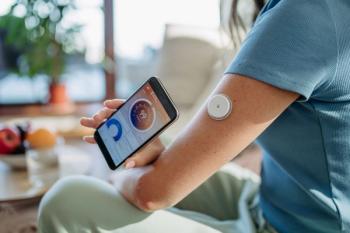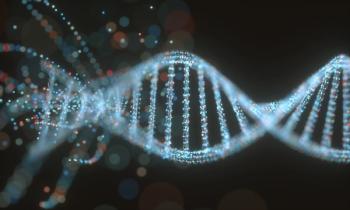
Differential Diagnosis of the Placental Adhesive Disorders
Differential Diagnosis of the Placental Adhesive Disorders by Contrasted Nuclear Magnetic Resonance & Ultrasound - Placenta Accreta and Percreta
Abstract:
The adhesion disorders of the placenta such as placenta accreta and percreta, constitute one of the principal causes of maternal morbidity due to hemorrhage post birth. The placenta previa and the reiterative cesarean are the principal risk factors; in them it is possible to diagnose according to direct and indirect echographic signs. However, in certain occasions the information obtained by the ultrasound is not conclusive, particularly in the differentiation between the placenta accreta and percreta. In these cases, or in those in which additional anatomical information is wanted on the placental invasion, the vascularization or on the actual state of the uterine and vesicle wall, the Nuclear Magnetic Resonance (MRI) provides precise anatomic images. These can be contrasted with gadolinium and distinguish exact limits between the miometrium and the placenta. Thus, the surgery and the proximal vascular control can be planned correctly and adequately. The experience with contrasted MRI in 15 risk patients, the distinctive characteristic of the differential images and the surgical correlation are described in this paper. KEY WORDS: Obstetric MRI, Contrasted MRI, placenta accreta, placenta percreta
Introduction:
The placental adhesive disorders such as placenta accreta and percreta are frequent causes of serious obstetric hemorrhages and are associated to a high maternal morbidity and mortality. These disorders can be supposed by epidemiological well defined information, such as placenta previa, multiple cesareans, reiterative uterine curettages, uterine infections, etc1. The echography has defined in them direct and indirect signs for their distinction, signs that in occasions allow their diagnoses and in others a strong clinic suspicion 2-3-4-5. However, this information may not be conclusive and additional information must be required.
For them, the Nuclear Magnetic Resonance (MRI) allows to obtain precise anatomic images of the uterine wall, the vascularization, as well as of other pelvic structures. The use of gadolinium – as contrast- provides a net differentiation between the placenta and the uterine wall6 , essential to differentiate the degree of placental invasion.
The radiological distinction between a placenta accreta and percreta practiced by MRI, will allow to establish conducts, approaches and previsions tending to minimize the hematic loss and plan conservative treatments.
Materials and Methods:
FIfteen patients were included in the study between the week 30 and 34 of pregnancy. They presented the following background or signs: 1) total occlusive placenta previa and cesarean (one or multiple) and 2) patients with direct or indirect echographic signs of placenta accreta.
All of them signed an informed agreement for the Resonance, as well as for the contrast administration. This was based in the recommendations and precautions of the FDA (Federal Drug Administration, USA) for this type of procedure in pregnant patients.
The studies were performed with a Resonator Picker EDGE 1.5 Tesla with body coil. All the patients were examined by axial and Sagittal cuts, T1, SE, TE 8, TR 140, FOV 45 to 50, TK 6 to 7, RES 160X256, PS 0.602, FLIP 120º, NA 1. BREATH HOLD 20 Slice and FAT SAT SE, FATSAT, TE 20, TR 500, FOV 45 to 50, TK 6 a 7, RES 128X256, FLIP 90, NA ½ BREATH HOLD. A bolus of Gadolinium (Gadopentetate dimeglumine) was done in them, which was injected quickly in a 0.1 mol/Kp doses. The images were acquired in bolus 45 and 90 seconds after the injection.
In all the images the following was evaluated: the placental position and morphology, the placental sign adjacent to the miometrium and the retrovesical surface.
Results:
The results obtained will be exposed in
Discussion:
The MRI has been used for the diagnoses of placenta accreta and percreta since 1982 7. However, and despite its use in similar cases, few studies exist that indicate its utility in the differential diagnoses before birth in these disorders. 8-9-10
In 1997, gadolinium was used for the first time as a method to contrast the placenta, its high vascularization provides a quick contrast after the initial gadolinium injection. The myometrium instead, takes some seconds more to contrast. Therefore, the differentiation between both tissues is very visible 45 and 90 seconds after the contrast injection.
Although the safety of the study with Magnetic Resonance and Gadolinium has not been perfectly established, the accumulated experience in human beings for more than 16 years has not shown adverse effects. The studies with contrast performed in pregnant animals 11-12-13 have shown collateral effects. Thus, all the patients are dully informed in the MRI and the use of gadolinium. They provide in all the cases their written consent and as the FDA suggests, only those patients in which the existent disease sets an actual risk of maternal death are studied with this method.
Given the physiological and morphological placental changes occurred during the gestation, this study is indicated of preference from the 30th to 34th week of pregnancy. Thus, the obtained results would determine the opportunity and surgical conduct changes.
The differentiation between the placenta accreta and percreta is anatomicopathological and clinical. From the histological point of view, both entities are differentiated by the degree of placental invasion in the miometrium. But still more important is the clinic diagnoses that will indicate actually an active attitude towards this suffering.
The first diagnoses undoubtedly is constituted by the clinic suspicion. Any obstetrician that today finds that a patient has placenta previa and previous cesareans, has to search to improve and direct the diagnoses methods.
Within the diagnostic methods, the ultrasound is the most habitual, economic and diffused one. However, in occasions the anatomic information may not be conclusive, the contrasted MRI provides crucial information for them. This information on the vascularization (Angioresonance), of the anatomic planes and of the degree of invasion, modifies the surgical strategy.
In the placenta percreta, the degree of damage of the uterine wall is such, that the risk of maternal and fetal complications increases notably after the 35th week exceeding 90% after the 36th week.14
Other aspects subject to change is the laparotomy and the hysterotomy. In the placenta percreta, the notable vascular anastomotic net creates the necessity of a vascular, proximal control of the iliac system, impossible of reaching by a parietal incision of Pfannestiel. The uterus cannot be opened by the segment since the massive hemorrhage and the vesical rupture are a rule by that pathway. The placenta percreta then obliges to a medial incision with fundal hysterotomy and proximal vascular control in the infrarenal aorta 15 before or during the 35th week. Similar cases have shown that without an adequate vascular control, the hematic loss is massive. 16-17-18-19-20-21
The contrasted Magnetic Resonance has allowed in these cases the correct clinic and radiological evaluation between the placenta accreta and percreta. The changes of attitude in them allowed a secure and planned approach in all the cases studied.
The average cost of the study is $300, lower to the operative cost of a single blood unit. Based on similar cases, when the finding of placenta percreta was surgical or when the vascular control was performed according to other urgency considerations, the hematological and intensive care expense is so important that the benefit of the MRI is more than obvious.
This resource is only part of a well directed protocol for the study of the risk patients. It does not replace in any way the clinic criterion or a good study by ultrasound. Our experience indicates that when the request is scientifically founded, no health insurance denies or questions the practice.
Unfortunately, there is an exponential increase of these disorders, related with the increase of the cesarean. Therefore, the obstetricians would observe them with more frequency and those who had already experienced a bleeding placenta percreta, may never forget it. Only the acute suspicion, the methodic study by images22 and the multidisciplinary treatment, will account for the therapeutic success of the programmed surgery of these disorders, of low cost and minimum transfusions 23-24.
Conclusions:
The contrasted study by Nuclear Magnetic Resonance has allowed the correct clinic and radiological evaluation in the series between the placenta accreta and percreta. The changes of attitude given by the anatomic and vascular knowledge by that technique, have allowed correct changes of attitude in the surgical opportunity and strategy.
The study must be recommended in those patients with potential life risk during the surgical procedure. The examination should be done with the informed agreement of the patient.
The information obtained by the Obstetric Magnetic Resonance has shown an excellent correlation with the surgical findings. Its use must be recommended in the planning of any surgery of placenta percreta, being indispensable when a conservative uterine treatment is planned.
The analysis cost benefit in the risk cases is distinctly favorable for the resonance, especially when its result modifies the opportunity and the most adequate technique of vascular control.
References:
Citation:
Palacios JM, et.al.; Differential Diagnosis of the Placental Adhesive Disorders by Contrasted Nuclear Magnetic Resonance; April 2001;
Also by José M Palacios Jaraquemada MD Ph.D
Conservative treatment in placenta accreta and percreta
Bibliography:
Lorraine M Stanco, David Schirimmer Emergency peripartum hysterectomy and associated risk factors. Am. J Obstet. Gynecol 1993; 168 (3):879 883.
Twickler R Ultrasound with color flow mapping of the placenta in patients at risk for myometral invasion Am J Obstet Gynecol 1995; Spo Abstracts: 350
Smith D, Foley D Real time ultrasound and pulsed Doppler evaluation of the retroplacental clear area. J Clin Ultrasound 1982; 10: 215-219
Hoffman Tretin J Placenta accreta, additional sonographic observations. J Ultrasound Med. 1992; 34 (11): 29-34
Finberg, H Placenta accreta: prospective sonographic diagnosis in patients with placenta previa and prior cesarean section. J Ultrasound Med. 1992; 11: 333-43.
Marcos HB, Semelka RC, Worawattaanakul S: Normal Placenta: Gadolinium-enhanced, Dynamic MR Imaging. Radiology 1997;205:493-496.
Thorp JM Jr, Councell RB, Sandridge DA, Wiest HH Antepartum diagnosis of placenta previa percreta by magnetic resonance imaging. Obstet Ginecol 1992;80:506-8
Fejgin MD, Rosen DJ, Goldberg SB, Beyth Y Ultrasonic and Magnetic resonance imaging diagnosis of placenta accreta managed conservatively J Perinat Med 1993;21:165-8
Taryn PTH, Li KCP Placenta accreta:MRI antenatal diagnosis and surgical correlation JMRI 1998;8:748-750.
Thorp JM Jr, Wells SR, Wiest HH, Jeffies L, Lyles E First trimester diagnosis of placenta previa percreta by magnetic resonance imaging Am J Obstet Gynecol 1998 Mar;178(3):616-8
Kanal E Pregnancy and the safety of Magnetic Resonance Imaging Magn Reson Imaging Clin N Am 1994 May;2 (2):309-19
Colletti PM, Sylvestre PB Magnetic Resonance Imaging in pregnancy Magn Reson Imaging Clin N Am 1994 May;2 (2):291-307
Rofsky NM, Pizzarello DJ, Weinreb JC, Ambrosino MM, Rosenberg C Effect of mouse development of exposure to MR imaging and gadopentate dimeglumine J Magn Reson Imaging 1994 Nov;4 (6):805-7
O'Brien JM, Barton JR, Donaldson ES: The management of placenta percreta: conservative and operative strategies.-Am J Obstet Gynecol 1996; 175(6):1632-38.
Palacios J, José Tratamiento conservador uterino en trastornos adherenciales de la placenta (acretismo y percretismo placentario) Rev Chil Obstet Ginecol 1998; 5: 363-369
Parviz Taefi, Kaiser T Placenta percreta with bladder invasion and massive hemorrhage, report of a case. Obstet Gynecol 1970; 36(5): 686-7.
Mayonda, Y Mássive obstetric hemorrhage due to placenta previa accreta with prior cesarean section. Int. J. Gynaecol. Obstet.199, Feb, 34 (23) pag.183-186.
Lymperopoulou, A Placenta percreta sur cicatrice de césarienen avec envahissement vésical. Rev. Fr. Gynécol. Obstét 1993;88 (6): 379-384.
Teo REC, Ahmed M, Chilton CP Placenta percreta involving urinary bladder (case report) Br J Urology 1996;78:140
Smith CS, Ferrara L Placenta previa percreta with bladder invasion presenting as incarcerated hernia Urology 1992 Apr; 39(4):371-2
Bakri YN, Sundin T, Mansi M, Jaroundi M Placenta percreta with bladder invasion: report of three cases Am J Perinatol 1993;6(10):468-470
Levine D, Hulka CA, Ludmir J, Li W, Edelman RR: Placenta accreta: Evaluation with Color Doppler US, Power Doppler US, and MR Imaging. Radiology 1997;205:773-776.
Newspaper "Mercurio de la salud" Medicina sin transfusiones 1998;18:1-4
Thomas JM Alternative nonblood management in obstetrics and gynaecology (letter) jSOGC 1993;15(9):1042-3
Proceed to:
Differential Diagnosis of the Placental Adhesive Disorders by Contrasted Nuclear Magnetic Resonance - Placenta Accreta and Percreta
Newsletter
Get the latest clinical updates, case studies, and expert commentary in obstetric and gynecologic care. Sign up now to stay informed.









